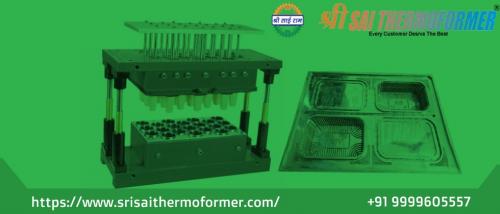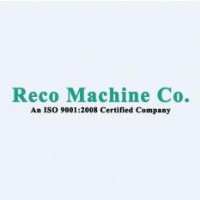Thermoforming Mould and Machine Manufacturing Equipment

A thermoforming machine is a type of
manufacturing equipment that is used to shape plastic sheets into specific
forms through the application of heat and pressure. It is commonly used in the production
of packaging materials, such as trays, containers, and blisters, as well as in
the manufacturing of various types of consumer goods, including toys,
electronic products, and automotive parts.
The process of thermoforming Mould involves heating a plastic sheet until it becomes pliable and then
forming it into a specific shape using a mould. The plastic sheet is placed
over the mould and vacuum pressure is applied to the mould, which pulls the
heated plastic sheet into the mould cavity. The plastic sheet is then cooled,
which allows it to solidify and maintain its shape.
There are several types of thermoforming
machines available, including
inline machines, rotary machines, and shuttle machines. Inline machines are
used for high-volume production runs and can produce multiple parts at once.
Rotary machines are designed for larger parts and can produce parts with
complex shapes. Shuttle machines are used for smaller production runs and can
produce parts with a range of sizes and shapes.
Thermoforming machines are versatile and
can be used with a wide variety of plastic materials, including PVC, PET, PP,
and PS. They are also relatively cost-effective compared to other types of
plastic manufacturing equipment, making them a popular choice for many
manufacturing applications.
The Next Big Thing in Blister Forming Mould
Blister forming moulds have been an
essential tool for the manufacturing of blister packaging products for several
decades. However, there are several emerging technologies and trends in blister forming moulds that are likely to shape the future of this industry.
Here are a few potential next big
things in blister forming moulds:
1. 3D Printing: With the advent of 3D
printing, blister forming moulds can
now be produced more quickly and cost-effectively than ever before. 3D printing
technology allows manufacturers to create customized moulds with greater
precision and accuracy.
2. Automation: The integration of
automation technologies in blister forming machine can help reduce manufacturing time and increase production efficiency.
Robotic systems can be used to handle and process materials, reducing human
error and improving overall productivity.
3. Eco-Friendly Materials: Consumers are
becoming increasingly environmentally conscious, and there is a growing demand
for eco-friendly packaging materials. Manufacturers are developing new
materials and technologies that are biodegradable, compostable, and recyclable,
which will require moulds that can accommodate these new materials.
4. Smart Moulds: The use of sensors and
Internet of Things (IoT) technology in blister forming moulds can help
manufacturers monitor and optimize the manufacturing process. Smart moulds can
detect problems, track production metrics, and improve quality control.
5. Customization: As consumer preferences
continue to evolve, manufacturers are looking for ways to offer more
customization options. Blister forming moulds that can produce a variety of shapes, sizes, and colors will become
increasingly important to meet the changing needs of consumers.
Overall, the future of blister forming moulds
will be shaped by a combination of new technologies and changing consumer
preferences. Manufacturers that can adapt to these changes and innovate in
their products and processes will be best positioned to succeed in this competitive
industry.
Post Your Ad Here

Comments